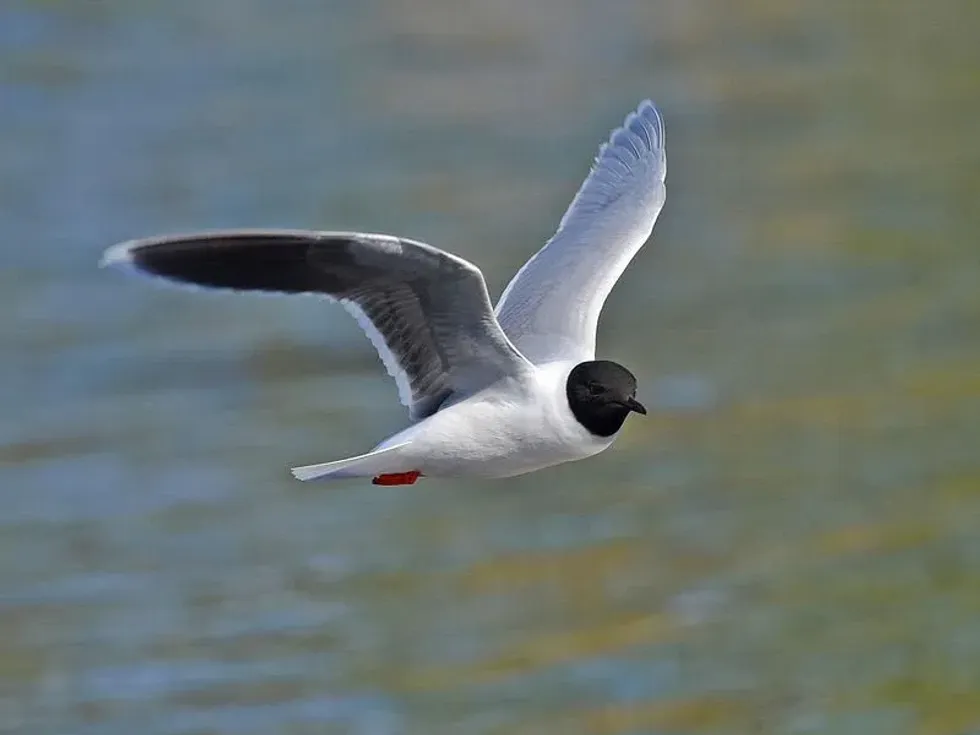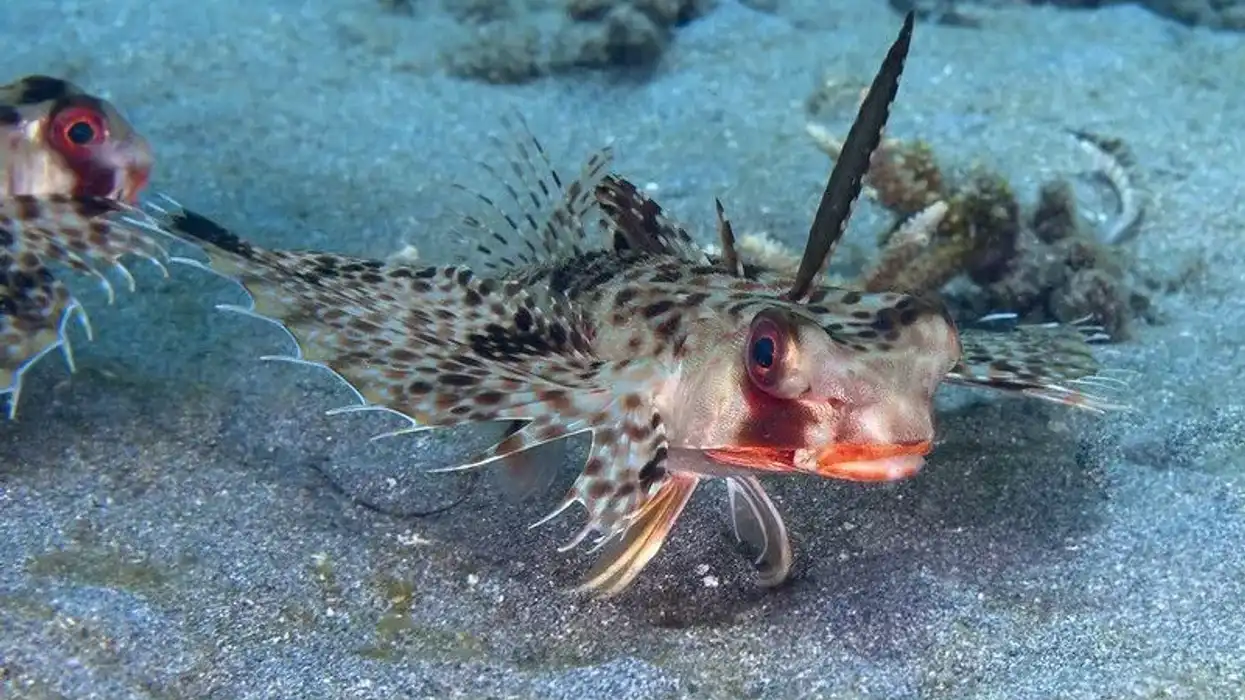The little gull is known to be the smallest gull in the world, and it is found in a range of areas in North America, Europe, the UK, Asia, Northern Africa, and other places in the Palearctic region.
Although they aren't that common in North America, you may find them in a range of regions surrounding the Great Lakes and other bodies of water. So, if you live near the Great lakes, you should definitely keep your eyes open for these birds!
You can easily find most of their common habitats on a map and also search for their summer and winter migration patterns on the same map.
You can also find other gull species such as the herring gull all across the North Atlantic. When it comes to their population, the IUCN red list has listed their conservation status to be under the 'Least Concern' category as the number of adult little gulls has been increasing over time.
They live in a range of habitats.
When it comes to their appearance, the adult gulls have a very distinct look, which makes them pretty easy to spot. In terms of their plumage, an adult gull has a black head or hood, pale grey upper parts, black or dark gray underwings, and completely white underparts.
They also might have white stripes that extend across their wings and body.
The legs and the bill, generally, have a reddish-brown hue. They can be found in various southern regions during the summer, especially off the coast of many Northern African countries.
When it comes to their breeding, their breeding cycle starts in the summer and not in the winter, and they end up producing between two and six eggs in the nest, which is situated on either wet or dry land.
If you liked reading this article and wish to search for other similar ones, you should check out kestrel bird facts and laughing gull facts.
Little Gull Interesting Facts
What type of animal is a little gull?
The little gull (hydrocoloeus minutus) is a small migratory gull found mainly in Europe, the UK, Asia, and occasionally in certain regions of North America.
What class of animal does a little gull belong to?
It is a type of bird that belongs to the Aves class. It belongs to the Charadriiformes order and is a member of the Laridae family. It is also referred to as the smallest gull in the world.
How many little gulls are there in the world?
Although there is no estimate of the number of little gull birds currently present in the world, the IUCN Red List has listed these species as of Least Concern because their numbers seem to be increasing over the years. These small gulls have routinely been spotted all across Europe, Asia, and North American regions.
Where does a little gull live?
This species is spread out on the map and is most commonly found in Palearctic regions, which covers Europe, the UK, Asia, and North Africa, as well as North America, where they were first spotted in 1819. They are migratory birds, therefore, they are seen in different locations during the summer and winter seasons.
What is a little gull's habitat?
The little gull is found in many habitats such as near shores, beaches, freshwater and brackish marshes, and near bays and lakes. They may also be found off the coast of Florida and some states in North America, around water bodies such as oceans and the Great Lakes.
They are only found in small numbers in North America. When it comes to nesting, they place their nests on the ground near the grasses and vegetation.
Who do little gulls live with?
They are usually found in pairs or in groups of three as well. Therefore, we can say they don't prefer isolation by nature and are social creatures. A group is often called a flock, like a flock of carrier pigeons, a squabble, or a gullery.
How long does a little gull live?
The average lifespan of a little gull is between 10 and 15 years. Their complete lifespan is dependent on their health, food intake, weather, and the presence of predators.
How do they reproduce?
This bird often breeds in certain areas in Central Europe as well as Canada. The little gull bird breeds in groups or colonies, however, these are generally small groups.
Their nest is situated pretty close to the water, and it may be on wet or dry ground. Both genders engage in the process of incubation during breeding, which takes close to 23-25 days. The young leave their family and take flight from the nest soon after they feel independent.
This bird breeds during the summer, often in the month of June, and lays between one to six eggs. This gull breeds soon after they become an adult, which is usually at the age of two or three years.
What is their conservation status?
The IUCN red list has listed the little gull under their 'Least Concern' category.
Little Gull Fun Facts
What do little gulls look like?

The little gull bird attains its complete adult plumage at three years of age. At that point, its underwings black or dark grey, its upper parts are pale gray, and the rest of the plumage is completely white.
In the occurrence of alternate breeding, the hood is completely black, the underparts are white with a hint of pink, and the upper wings are pale gray. Their head is black, especially during breeding.
Their legs and feet are usually red, as well as their beak, which is accompanied by a dark black tip. They are most commonly recognized by their dark black hood.
How cute are they?
These little birds are pretty cute as they are the smallest type of gull in the world and seem aesthetically pleasing. Compared to seagulls, they are much smaller and therefore, seem much more approachable and adorable.
How do they communicate?
A little gull bird mainly communicates through different vocalizations or types of calls. This bird has around 13 types of calls and is often recognized by its most famous call - the long call.
It is a combination of three of their calls. Other calls by this bird include attack calls, the alarm call, the begging call, the choking call, and the food call.
How big is a little gull?
In terms of their length, these gulls land somewhere between 9.84-11.81 in (25-30 cm). When compared to other gulls or birds, they generally are a smaller species. In terms of their size, they can most easily be compared to crows. They are larger than our average parrot or canary.
How fast can a little gull fly?
Their exact speed is estimated to be around 1.8-10.8 kmph (0.5–3 mps), and it is often described to be graceful and extremely 'tern-like', i.e. their flight techniques resemble those of terns.
Their flight techniques during foraging also resemble other Laridae birds. During migration, they often fly south from places in Europe and Asia to the Meditteranean or a range of places alongside the African coast.
How much does a little gull weigh?
The average weight of a little gull rests somewhere around 0.22-0.33 lb (100-150 g). This bird stays in the nest only for a short period during infancy.
What are the male and female names of the species?
There aren't specific differentiating terms used for males and females in this species.
What would you call a baby little gull?
Baby gulls are often referred to as 'young', or sometimes even 'nestlings' if they're too small to leave their nest.
What do they eat?
These birds are carnivores, who mainly feed on insects and fish. They also consume crustaceans such as white shrimp, mollusks, glow worms, spiders, and smaller fish.
Since these birds are known to have annual migration cycles, their food sources aren't located in specific places, rather they can be found anywhere. They sometimes eat during flight and catch their prey in the air, or pluck them from the water or vegetation.
Are they dangerous?
They aren't known to be extremely dangerous birds, however, they can tend to be aggressive or hostile at times. They are most aggressive before and during their nesting periods. Males tend to be more aggressive compared to females.
Would they make a good pet?
Generally, wild birds are not meant to be domesticated, therefore they do not make good pets. Their behaviors may change or their health may deteriorate, causing their population to dwindle.
In many places in the world such as the USA, it is actually illegal to keep wild birds as pets. The little gull is not inherently endemic to any area of the world, as it can be found in a range of places spanning across the Palearctic.
Did you know...
They are most commonly witnessed during the winter migration season in North America, alongside flocks of Bonaparte's gulls.
A special aspect about seagulls is that they are nurturing and attentive parents.
Are there land gulls?
Gulls or seagulls are often referred to as inland seagulls or inland gulls if they're found living in a deeply rural or urban environment. However, since most seagulls or gulls don't actually live in the water, rather near the shore or somewhere inland, they can actually be termed as land gulls.
When referring to land gulls, most people picture the western gull.
What is the difference between a gull and a seagull?
Gulls are the larger category and encompass the entire species, whereas seagull is just a term that is often used to refer to these gulls informally. This species doesn't actually live in the sea during winter or summer, so many people believe that the term 'seagull' is factually incorrect even though it is widely popular.
There is no specific 'seagull' species.
Here at Kidadl, we have carefully created lots of interesting family-friendly animal facts for everyone to discover! Learn more about some other birds from our prothonotary warbler facts and northern goshawk facts pages.
You can even occupy yourself at home by coloring in one of our free printable little gull coloring pages.









